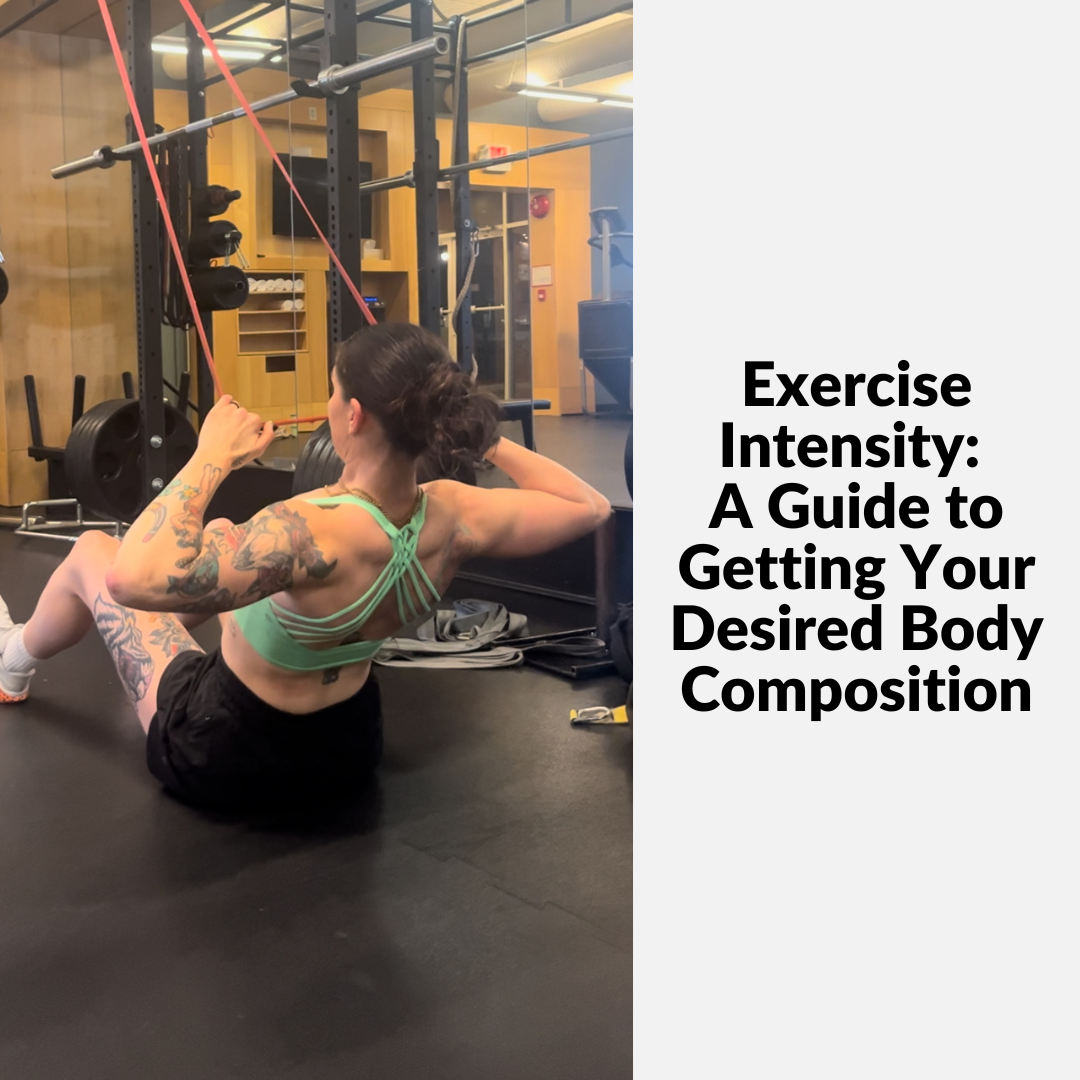
Most people who come through our doors want a more toned look or improved body composition. This means they want to put on lean muscle and reduce body fat. From a nutrition standpoint, we can structure programs to facilitate this for clients, whether that is different phases of muscle building and fat loss or body recomposition happening at the same time. For many people, just getting moving and lifting some weights will yield great results, but for those who are more well-trained and have experience in the gym, how hard you’re working during your sessions can make all the difference in achieving the goals you’re after.
Many women fear looking bulky or putting on too much muscle, but I promise you that won’t happen. It is very hard to put on even a little bit of muscle!
What is Body Composition?
First, let’s define what we’re talking about. Your body composition refers to the percentage of fat, muscle, bone, and water in your body. Improving body composition typically involves two goals:
- Decreasing body fat
- Increasing lean muscle mass
Both goals are crucial not only for aesthetics but also for overall health and metabolic function. But how does exercise intensity help get you there?
Understanding Exercise Intensity
Exercise intensity refers to how hard your body is working during a workout. It can be influenced by several factors, including the amount of weight lifted, the number of repetitions, and the speed at which you perform the exercises. Regarding strength training, lifting heavier weights typically means higher intensity, which can lead to more significant muscle hypertrophy (growth).
Why This Matters
1. Boosts Metabolism and Burns More Calories: When you increase the intensity of your workouts, your body has to work harder, which means it expends more energy—burning more calories during and after the session. High-intensity exercise leads to what’s called EPOC (Excess Post-Exercise Oxygen Consumption), or the “afterburn effect.” This is where your body continues to burn calories at a higher rate post-workout as it recovers.
2. Maximizes Muscle Growth: Intensity isn’t just for fat loss. If you’re aiming to build lean muscle, you need to challenge your muscles consistently. Lifting heavier weights or pushing close to your max creates muscle damage—this is a good thing! During recovery, your body repairs and builds those muscles back. This is where the combination of strength training and intensity becomes essential for building a lean, toned physique.
3. Hormonal Response: Heavy lifting triggers a surge in anabolic hormones like testosterone and growth hormone. These hormones are vital in muscle repair and growth, helping you build lean mass more effectively.
4. Progressive Overload: One of the fundamental principles of strength training is progressive overload, which means gradually increasing the stress placed on your muscles. Lifting heavier weights is one of the most effective ways to apply this principle, pushing your muscles to adapt and grow over time.
5. Bone Density and Joint Health: Lifting heavily builds muscle and strengthens bones and joints. This can reduce the risk of injuries and improve overall functional strength, which is crucial for everyday activities.
To ensure you’re hitting the right level of intensity, you need to understand how to measure it. Here are two common ways:
- Rate of Perceived Exertion (RPE): This is a subjective scale from 1-10, where 1 is no effort at all, and 10 is maximum effort. Ideally, you want to hover around a 7-9, pushing closer to 9-10 on the last set of some movements.
- Track Weights: Track the weight you’re lifting and how close you are to failure by the end of a set. Aim for a weight where you can perform the desired reps but are challenged by the last 2-3 reps and work to progress it as often as you can by adding weight or 1-2 reps.
By understanding exercise intensity and incorporating heavier lifting into your routine while prioritizing safety, you can unlock your potential for muscle growth and achieve the desired body composition results. Remember, consistency is key, so stay committed to your training and watch your strength—and muscle—transform.
Leave a Comment
You must be logged in to post a comment.
0 Comments